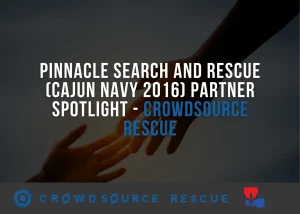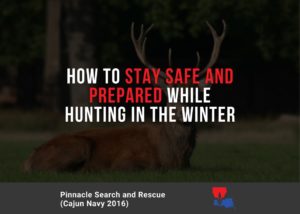In the wake of Hurricane Katrina, it became clear that hurricanes and other natural disasters are a grim reality for those living down South.
During these disasters, government agencies became stretched thin, and the public’s needs overshadowed their much-needed rescue efforts.
There simply weren’t enough resources to go around.
Keep reading to learn how one little group of volunteers that decided to help their neighbors in Louisiana has grown into a household name:
The Cajun Navy

The History of The Cajun Navy
The name Cajun Navy first came about in August of 2005 during the severe flooding that occurred from Hurricane Katrina in New Orleans and surrounding areas. A plea was put out by local officials for volunteers with boats to assist with the rescue efforts of thousands of stranded people.
As mentioned earlier, during natural disasters and other times of need, governmental agencies can become overwhelmed with the number of rescues needed. It became apparent that they needed additional help.
So, in typical South Louisiana fashion, neighbors started helping neighbors.
Because Louisiana is the “Sportsman’s Paradise,” a large number of the population own boats. These boat owners banded together to supplement local agencies in their search and rescue efforts, saving countless lives.
Read our recent blog post to learn what makes The Cajun Navy different from other organizations.
The Louisiana Cajun Navy was born.

The Louisiana Flood of 2016
In August of 2016, a series of severe thunderstorms dumped up to 36″ of rain in 48 hours, flooding many south Louisiana areas.
This time there was no warning as the flooding was a direct result of a storm without a name.
When the floodwaters began to rise, the Cajun Navy reemerged as Louisiana Sportsmen volunteers took to the floodwaters to help stranded victims.
Many of the volunteers had lost their own homes and possessions just as the victims they were helping did.
This major flood event would later be called the 1000 year flood for Louisianans, which most will never forget.
Social media and smartphone apps played a vital part in the rescue efforts with this particular event.
Alongside local first responders, the Cajun Navy rescued thousands of people during this devastating flood. Once the floodwaters receded, the volunteers did not stop to rest.
They continued gathering donated food, water, and other supplies and began delivering them to those in need.
Many people had lost their vehicles due to the high waters, so the much-needed supplies were delivered to them directly.
The next phase of efforts was focused on gutting and mucking houses and rebuilding, gathering, and installing used appliances for those who could not afford them.
Thousands of people and businesses lived/resided in NO FLOOD ZONES, which meant they were not required to have flood insurance, so most did not have this specific coverage. It was apparent the recovery would be long and costly.
The Cajun Navy came to the rescue.

Hurricane Harvey
When hurricane Harvey hit Texas in August of 2017, it dumped up to 56″ of rain in some areas causing another record flooding event.
The Governor of Louisiana, John Bel Edwards, called on the Cajun Navy once again. Thousands of Louisiana volunteers answered the call, they put their lives on hold, and they headed to Texas.
.@LPNews1898 La. Cajun Navy 2016 and Project We Care La. organize donated goods at Costco for to delivery to Harvey flood victims. pic.twitter.com/4eiyF0fik0
— John Dupont (@dupont_john) August 31, 2017
Cajun Navy 2016 set up its command center the following morning at Costco in the parking lot in Baton Rouge.
Boats, RV, and trucks with flatbed trailers poured in.
As people went into Costco to shop, they would purchase supplies and donate them to the Cajun Navy.
Every boat that left out of Costco for the next five days was loaded and ready.
During the rescue process, Pinnacle’s Facebook page and other social media were utilized to gather rescue requests and relay them to our dispatchers.
Various apps were also used to coordinate efforts as well.
Not only were people rescued, but supplies were delivered to various staging points and areas of need as well.

Hurricane Laura
Early in the morning on August 27, 2020, Hurricane Laura pounded Louisiana and Texas with gusty winds and heavy rain, and again, The Cajun Navy put boots on the ground all over the U.S. Gulf Coast.
Cajun Navy’s volunteers were deployed to Lake Charles, Texas, and all points in between before the storm and stayed for quite some time afterward, doing all they could to help.

Hurricane Sally
On September 16, 2020, disaster struck again, this time to our neighbors to the east. Once again, The Cajun Navy’s relief efforts became needed.
The Cajun Navy’s homegrown heroes alongside other rescue workers braved the dangerous elements and rescued scores of trapped residents.
Rescue after rescue house to house, they made sure everyone was out and safe. This would be the scene for several hours, taking people from their flooded homes to Arbor Walk’s entrance by boat and then transporting them to a local gas station by trucks.
When local authorities were unable to transport the families to local shelters due to flooded roads, the rain and winds were picking up, and it was time to move fast.
Next, The Cajun Navy turned their base camp church into a shelter until everyone rescued could be picked up by friends and family.
Stories like this can go on forever, but these are just the significant disasters and don’t consider all of the smaller missions like helping find lost boaters, missing persons, and numerous community outreaches performed every month.

Which is the Real Cajun Navy?
Throughout the South, many groups took on the name “Cajun Navy,” and it became apparent that more of an organized effort was needed.
Many of the Cajun Navy organizations lacked proper training and knowledge of FEMA’s NIMS framework, making the organization of large-scale incidents difficult.
Seeing this, the Cajun Navy 2016 Board of Directors decided to organize their group in a way that would allow them to work alongside local, state, and federal agencies.
Although there is no “official” Cajun Navy, this group is what most people see on the news when disaster strikes, however:
- Cajun Navy 2016 is the group seen in the Discovery Channel’s documentary Cajun Navy.
- Cajun Navy 2016 is the group that was invited to the White House by President Trump on three different occasions.
- Cajun Navy 2016 is the group that was invited to the White House to a ceremony with the Houston Astros.
Why the Change to Pinnacle Search and Rescue
With the numerous groups using the “Cajun Navy†moniker, it became necessary to set Cajun Navy 2016 apart from the others, in order for officials as well as the public to know the difference.
Pinnacle Search and Rescue was Born

About Pinnacle Search and Rescue
The heart of Pinnacle SAR is the same in 2021 as it was back in 2005 – rescue operations during:
When disaster strikes, The Cajun Navy is here to help.
Whether you’d like to join the Cajun Navy or make a financial donation, it’s through the support of people just like you that we are able to provide life-saving support to those in need.
Related Articles:











